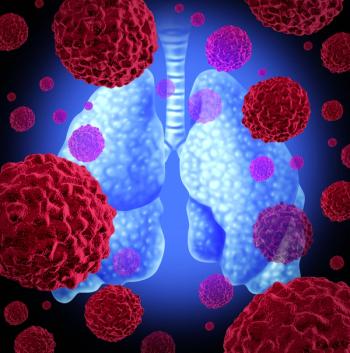
Autoimmune Skin Toxicities Linked With Response to Immunotherapy in Lung Cancer
A new study identified several T-cell antigens that are shared between tumor tissue and skin in a cohort of patients with non–small-cell lung cancer who were treated with anti–PD-1 therapy.
A new study identified several T-cell antigens that are shared between tumor tissue and skin in a cohort of patients with non–small-cell lung cancer (NSCLC) who were treated with anti–programmed death 1 (PD-1) therapy. The findings could help explain the mechanisms behind autoimmune adverse effects to checkpoint inhibition.
“The autoimmune toxic effects of checkpoint inhibitors are frequent, with immune-mediated adverse effects of any grade occurring in approximately 30% of patients and toxic effects of grade 3, 4, or 5 occurring in up to 10% of patients,” wrote study authors led by Fiamma Berner, MSc, of the University of Zurich in Switzerland. “The causes of these events remain elusive.”
To examine those causes, the researchers examined a prospective cohort of 73 patients with NSCLC treated at four Swiss centers with either nivolumab or pembrolizumab. The investigators analyzed peripheral blood mononuclear cells, tumor biopsy specimens, and biopsies of the site of autoimmune skin toxic effects. Patients were a mean age of 68.1 years, and 60% were men. The
A total of 25 patients (34.2%) developed autoimmune skin toxic effects; this was more frequent in those patients who experienced a complete remission or partial remission (68.2%) than in those with progressive or stable disease (19.6%; P < .001). Specifically among those with progressive disease, the rate of autoimmune skin toxic effects was 16.2%.
Patients with those toxic effects had better overall survival than those without the effects, with a hazard ratio (HR) of 0.29 (95% CI, 0.12–0.71; P = .004). The same was true for progression-free survival, with an HR of 0.22 (95% CI, 0.09–0.49; P = .001). Patients who responded to the checkpoint inhibitor therapy had an odds ratio for experiencing autoimmune skin toxic effects of 5.28 (95% CI, 1.78–15.67; P = .003); the authors noted that this was similar to other studies, suggesting that autoimmune adverse effects are associated with response.
The investigators reported that the sites of autoimmune skin toxic effects, as well as lung tumors, had dense infiltration of T cells. A total of nine T-cell antigens were identified that were shared between tumor tissue and skin, and these antigens were then shown to be able to stimulate CD8+ and CD4+ T cells in vitro.
“This study suggests that, during checkpoint inhibitor therapy, T cells recognizing shared lung tumor and skin antigens simultaneously target both organs,” the authors wrote. “This process is associated with the development of autoimmune skin toxic effects and likely with tumor regression as well.”
In an
“This suggests that T cells recognizing shared antigens in skin and lung tumor infiltrated both sites and supports the conclusion that the toxic effect mechanism was related to overlapping antigens in lung tumor and skin,” they wrote. “This elegant report mechanistically associated the development of skin toxic effects in patients with NSCLC treated with PD-1 blockade with detection of shared tumor-skin antigens that were subsequently shown to be immunogenic and responsible for [tumor antigen]–specific immunity at the tumor site.”
Newsletter
Stay up to date on recent advances in the multidisciplinary approach to cancer.
































































































